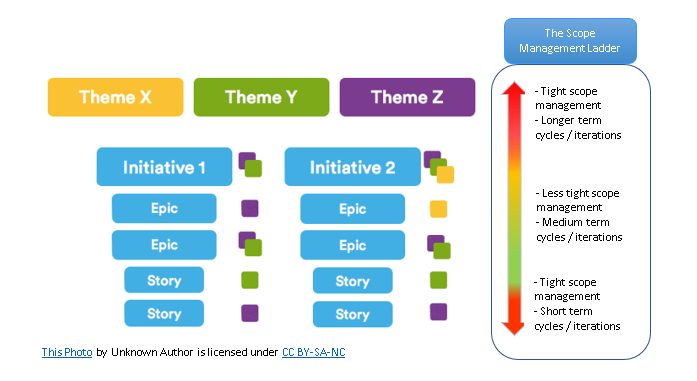Photo by Nick Fewings on Unsplash
Many of us as rookie Project Managers have got this thing dinned into our heads early in our careers. Manage Scope or perish – especially, if you have bid fixed price to a customer for software development. But the practice of scope management on the ground did often create a lot of tension for customers and us Project Managers alike. What did phrases like “multi-currency support” or “personalization” or “contextual help” really mean? Well, for me as a PM, such phrases kept me awake at night to be followed in the morning by debates with customers on what they meant versus what we had implemented! Customers tended to say everything they wanted was all just natural elaboration for developers (or at best “just a minor change”) and not at all a change of scope. As implementers, on the other hand, we would exclaim “scope change” at the drop of a hat!
Cut to the present. Do PM’s now feel a tremendous sense of relief and freedom because scope is now considered the most flexible in the iron triangle? And therefore, is scope management itself “out of scope” in today’s software project management? The nature of traditional scope management is such that it is quite front-loaded in the project. Once requirements are reasonably understood and product scope is elaborated for work to progress, the focus often shifts to just getting it done. Further scope management is more about “control” of scope and navigating through unwelcome changes. If that continues as the approach for scope management, there would be little surprise in people labelling it out of scope.
So, what is an appropriate view and practice of scope management for the VUCA world of today? The catch phrase is “continuous everything” – continuous integration, continuous deployment, continuous value delivery etc. So, it should be with scope management as well, I believe – “continuous and contextual scope management” in tune with discovery and feedback on what really is value to users. To explain that, consider the structure below for managing products at various levels from the theme level to initiative, epic and story levels.

In the diagram above, if theme Y is to “decrease product deployment time for customers by 25%”, there can’t be two ways about it, can it? So, the “scope” is rather tight at that level. As you move down the hierarchy, it gets into more and more of “how best” to achieve theme Y. Initiative 1, for example, could be “move 50% of on-prem customers to the cloud product” and a related epic could be “Tune customer self-service bot for cloud adoption”. At these levels, scope management should become relatively looser and open to discovery of innovative “how best” options. Also, the iteration cycles get shorter for continuous feedback and adjustments to scope. However, as you move even further down from epic to stories and tasks, scope management needs to become tighter again – since now, it’s all about the nuts and bolts and rigor in implementation. The iteration cycles now become rapid, a matter of days & weeks. No doubt, it continues to be a creative process in various ways but the operative word now is rigor. So, that in essence is “the scope management ladder”, a term I coined that is shown in the diagram above.
The ladder concept should help adjust one’s mindset and the degree of scope management depending on which rungs of the ladder you are at. The many wheels of continuous scope management would all then turn more smoothly. There would be less frustration with the apparent ”bureaucracy” at higher levels of management and seemingly “anti-agile” ways of working. The folks at those levels are managing the business outcomes and all the time figuring out how best to achieve them. Not an easy job. So, if you, as a middle level manager are frustrated at times with the folks upstairs and in corner offices, take heart and appreciate the complexities of what they face.
So, in conclusion, rather than being “out of scope”, I believe scope management in today’s software world is continuous and contextual depending on where you are in the scope management ladder. It is also all-pervasive in the day-to-day work context involving everyone and not just the PM and the Leads.
Look forward to hearing your views.
Do try out the Challenge of the Week (CHOW): Five out-of-scope questions




